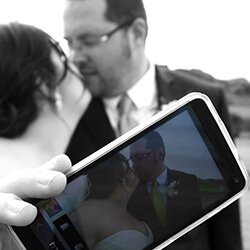My Top Five Tips for Media Relations
I love media relations! This is something I never thought I would be saying, especially looking back to those days in the classroom, pitching media about a hypothetical media conference. But over the past year, my confidence (and success) in media pitching has grown exponentially, and I wanted to share my Top Five tips for all the budding PR professionals who may be reading this.
- Before you even think about pitching an outlet, make sure you research your angle. This provides you with the opportunity to see if the angle has already been covered, and if it has (it most likely has, let’s be real), you can position your pitch as something that is adding new insight to an already existing story. If it hasn’t been covered before, that’s a hook in itself!
- Build a relationship with media. So a journalist is interested in your story, now what? You need to be quick and incredibly helpful in providing them with the information they need to meet their deadlines. After the piece runs, be sure to say thank you. I remember how excited I was when my first big release had major pick-up. I made it a point to send thank-you cards to each journalist that covered it, and offered them exclusives with the next story I had. I even sent out holiday cards this past December to all the media that I worked with over the year. It’s the little things that help you stand out from the pack.
- Tailor your pitches. While it’s easy to simply copy and paste a pitch to all the journalists on your media list, you are more than likely not going to get a response. Instead, show that you’ve read their pieces and have picked them to be pitched based on what they write about.
- Make sure your news is actually newsworthy. It’s easy for your client to want to put out a release with every single move the company makes, however small it may be. In some cases, this is needed to meet stakeholder requirements. But usually, you can manage your client’s expectations. If you think the story isn’t newsworthy, the journalist won’t either. Remember, they are incredibly busy, so filling up their inboxes with so-so news won’t look good on you.
- Visuals and interview opportunities are your best friend. When you’re pitching media, the easier you can make their job, the better. Whenever possible, offer high resolution images or infographics that they can use in their story. Also, have a list of interview opportunities and how they relate to the story somewhere in your pitch. I’ve found journalists really liked having one liaison between themselves and the interviewees when it came to scheduling. This is one less hassle for them as they work to meet their deadlines.
At the end of the day, it’s all about your story and your relationships. When I first started, I never thought I would see the day I would say “I enjoy media pitching”. But these tips I’ve learned over the past year have really helped make me the PR chick I am today.
I’d love to hear from you! Do you have other tips and tricks you want to share? Tell me about them in the comments.
Until next time!






